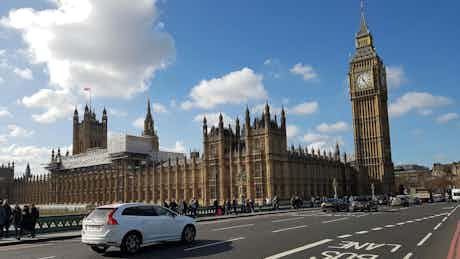Car changing is a big deal
Planning to drive into Central London? You could soon be paying £18 a day under new TfL proposals aimed at cutting traffic and pollution.
If you drive into central London, your daily costs could be going up. Transport for London (TfL) is proposing to increase the congestion charge from £15 to £18 per day, starting 2 January 2026.
This would be the first increase in the charge since 2020 and forms part of TfL’s broader effort to cut traffic and pollution in the city. The £15 charge introduced in 2020 is now equivalent to around £19 due to inflation, meaning the proposed £18 fee remains slightly below that level, according to the Bank of England.
But it’s not just the price that could change. If you’re a resident, the discount rules are also changing. From March 2027, only people living in central London who drive electric cars will be eligible for a discount – meaning fewer people will qualify.
The charge won’t stay the same either. TfL plans to increase it every year, matching rises in public transport fares, which means the cost could go up over time.

Electric cars currently don’t have to pay the congestion charge, but that’s about to change: from 25 December 2025, they will no longer be fully exempt. Instead, starting in early 2026, EV drivers will receive a 25% discount, paying £13.50 a day.
Meanwhile, electric vans, heavy goods vehicles, and quadricycles will get a larger discount of 50%, paying just £9 a day
But keep in mind, these discounts will shrink over time. By 2030, electric cars will only get a 12.5% discount, moving closer to full charge like other vehicles, no matter their emissions, according to the proposals.
Why is the TfL doing this?
TfL says these changes are part of its long-term strategy to clean up London’s air and reduce reliance on private cars – particularly petrol and diesel models.
“Achieving this long-term vision will require cutting congestion further and a greater shift away from petrol and diesel vehicles towards walking, cycling and public transport,” TfL said in a statement.
The congestion charge zone covers much of central London, including areas such as Westminster, Soho, the City of London, Southwark and Lambeth. It’s roughly bordered by major roads such as Vauxhall Bridge, Euston Road, and Tower Bridge Road.
You can have your say on this
TfL is inviting the public to give feedback on the proposal through a consultation running from 27 May to 4 August. You can share your views on the Congestion Charge proposals page.
These potential changes follow the city-wide expansion of the Ultra-Low Emissions Zone (ULEZ), which charges drivers of older, more polluting cars £12.50 per day.
How does the congestion charge work?
To keep London’s streets flowing and pollution down, the Congestion Charge is enforced using smart Automatic Number Plate Recognition (ANPR) cameras. These cameras are carefully positioned around the zone’s boundary, capturing clear images of every vehicle entering and leaving the area during charging hours.
If a driver hasn’t paid the required fee, the system flags the vehicle, and a Penalty Charge Notice (PCN) is sent straight to the registered owner. This makes sure everyone plays by the rules and helps keep the city moving.
Car change? ¡´ª®÷±≤•!
Looking for a new set of wheels? With ¡´ª®÷±≤• you can sell your car quickly and for a fair price ‚Äì as well as find great offers on your next one. Whether you‚Äôre looking to buy a car brand new, are after something used or you want to explore car leasing options, ¡´ª®÷±≤• is your one stop shop for new car deals.
Click to follow us on WhatsApp, where you can keep up-to-date with all the latest news, reviews, advice guides and videos.
